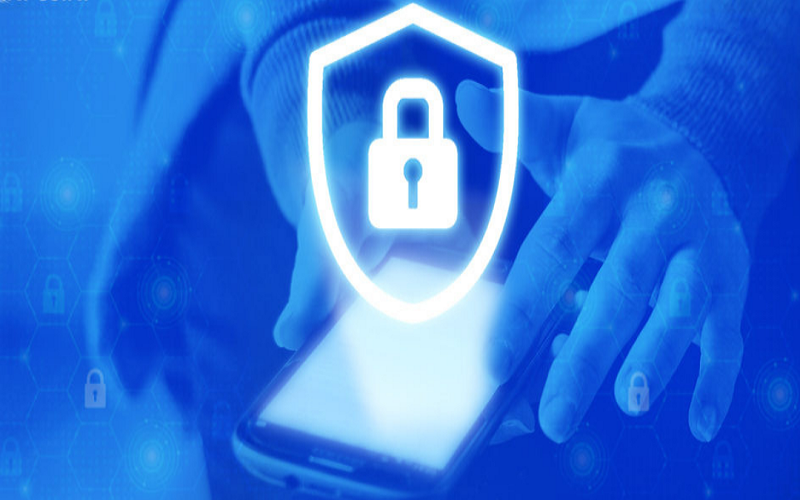With smartphones acting as expansions of our lives in anincreasingly digital world, mobile applications are now necessary tools for productivity, interaction, pleasure, and other purposes. But the ease they provide is not without cost, especially regarding security. Security lapses in mobile apps can result in compromised personal information, monetary losses, and harm to developers’ and users’ reputations. Mobile app security must be given top priority by both developers and users to reduce these dangers. These are a few essential pointers to improve mobile app security.
- Implement Secure Authentication Mechanisms: The first line of protection against illegal access to mobile apps is authentication. Strong authentication methods like biometric authentication (facial recognition, fingerprint) or multi-factor authentication (password + OTP + token-based verification) are the ones that developers should use. By adding more security layers, these techniques make it more difficult for attackers to obtain illegal access.
- Encrypt Private Information: Keeping such information secure is not possible without the use of the codes that provide the level of encryption. Data security is a main pillar that supports the full safety of data when data is at work and while it is resting so use superb encryption. This is, please, also take care to have preclude and you will use data, if possible, you localize. If you possess data that has to be encrypted, encrypt it using the approved protocols before transmission.
- Upgrade and Patch Applications Frequently: This helps developing companies keep security flaws from going undetected by issuing immediate reports and patches. Besides introducing new components, software maintenance involving general updates also takes care of systematic flaws highlighted by constant surveillance and response of the users themselves. Therefore, they must patch their systems with available updates in time to best use the newest security assistance.
- Adopt Appropriate Session Management: It is this session management (the main purpose behind which is to keep the possibility of password-cracking as minimal as possible) that essentially operates as a mechanism of user account failure prevention. Session hijacking and replaying attack risk can be minimized by utilizing cryptographic tools like secure session tokens, a second authentication for the main and important transactions, and setting session timeout. One crucial thing is to guarantee that conditions are provided for a safe ending during which participants can terminate the session by confirming the “logout” procedure.
- Secure Network Communication: The mobile apps most of the time connect with such backend servers and other services on the internet which may cause hacking, and interception thus rendering such applications vulnerable. Consideration of the use of encrypted communications to ensure that data being exchanged between applications and servers is safe (e.g. HTTPS/TLS). Moreover, to not have man-in-the-middle attacks and guarantee communication integrity, you also need to require certificate pinning.
- Apply Appropriate Input Validation: To stop injection attacks like SQL injection and cross-site scripting (XSS), input validation is crucial. Verify and clean up all user input to make sure it follows the correct forms and is free of harmful stuff. Developers can reduce the possibility of code injection vulnerabilities and data manipulation by implementing stringent input validation.
- Adopt Secure Coding Techniques: Creating robust mobile apps requires adhering to secure coding techniques. This entails using secure coding frameworks, following industry-standard security rules, and regularly reviewing code to find and fix security issues. Developing secure code from the start reduces the possibility that vulnerabilities may be introduced.
- Apply the Model of Appropriate Permissions: The mobile device permission keeps a check on the amount of access that an app has to the device assets, including the camera, microphone, location, and contact Although the requirement may be inconvenient and time-consuming, it is fair to ask developers to follow the leaf-responsible principle, giving only those permissions that are needed. To be able to make aware of what they want to make public via their privacy settings, users should be explained the reason for each demand for authorization.
- Use Runtime Application Self-Protection (RASP): RASP solutions, seeing these issues as they pop, take immediate action to correct them and monitor the activity of apps at the run time. With the expansion of local security measures, such as the application of RASP technologies to the program, hackers can possibly be possible mitigated and software flaws can be identified and addressed. RASP can develop applications that are more accurate in the present context wherein the targets keep on changing.
- Perform Frequent Penetration Testing and Security Audits: Several tests and audits, such as regular penetration testing and security audits, are to be performed so that vulnerabilities possible to exploit can be detected and fixed beforehand. Provide the designers and developers with certified independent security professionals whose job would be to evaluate the app’s security status. They should include penetration tests, vulnerability scanning, and code inspection among others. In addition to defense against attacks, the app is increasingly becoming a secure platform due to errors being fixed on time.
- Inform Users of Security Best Practices: One of the most important aspects of mobile app security is user knowledge. Users should receive explicit instructions from developers on how to maintain security, including avoiding sensitive transactions on public Wi-Fi, spotting phishing efforts, and updating devices and apps regularly. Users with greater knowledge are more likely to adopt safe practices, which improves app security.
- Create plans for responding to incidents: Even with the best of intentions, security mishaps can still happen. Clearly defined incident response procedures are essential for developers to handle and lessen the effects of security breaches. This covers the protocols for identifying, containing, looking into, notifying, and recovering from incidents. Developers can lessen the effects of security breaches by acting quickly and decisively.
Finally, it can be said that on one party it comes down to the users and another to the developers. By balancing the Enterprise app security requirements of both parties and maintaining delicate work to ensure that the security of mobile apps during the application creation lifecycle is the core responsibility of both parties, the safety level of mobile apps is being boosted. Security in the mobile apps domain becomes a matter of survival for hundreds of apps in which the user data is highly confidential and the reliability and trust are decisive.




